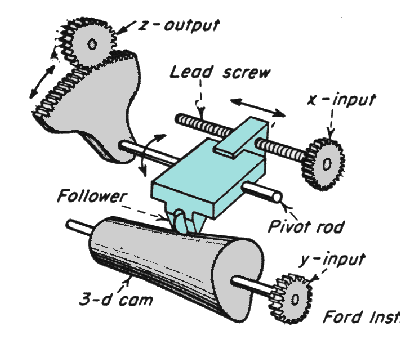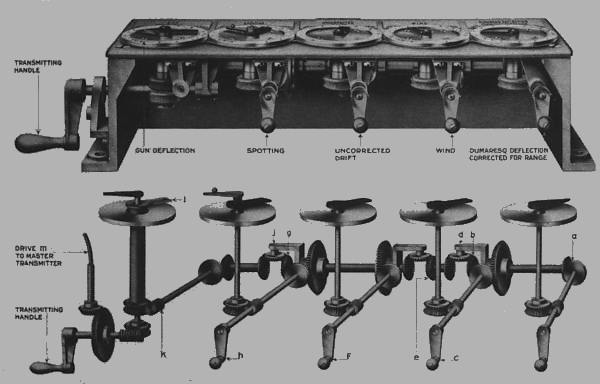Updated: 22 Oct 2007
Dreyer added




Updated: 22 Oct 2007 |
 | Left: Evaluating a function of one variable with a rotary cam.
|
 | Left: Evaluating a function of two variables x and y with a 3D rotary cam. |
 | Left: One method of mechanical multiplication
|
 | Left: A Dreyer Fire Control deflection totaliser: 1906.
|
 | Left: A US Army Air Corps astro-navigation computer from 1938.
This unit was carried by Howard Hughes on a round-the-world seaplane flight. Photo from Popular Mechanics, Oct 1938
|
 | Left: The internals of the US astro-nav computer. I'm afraid I know nothing about its internal operation.
|



